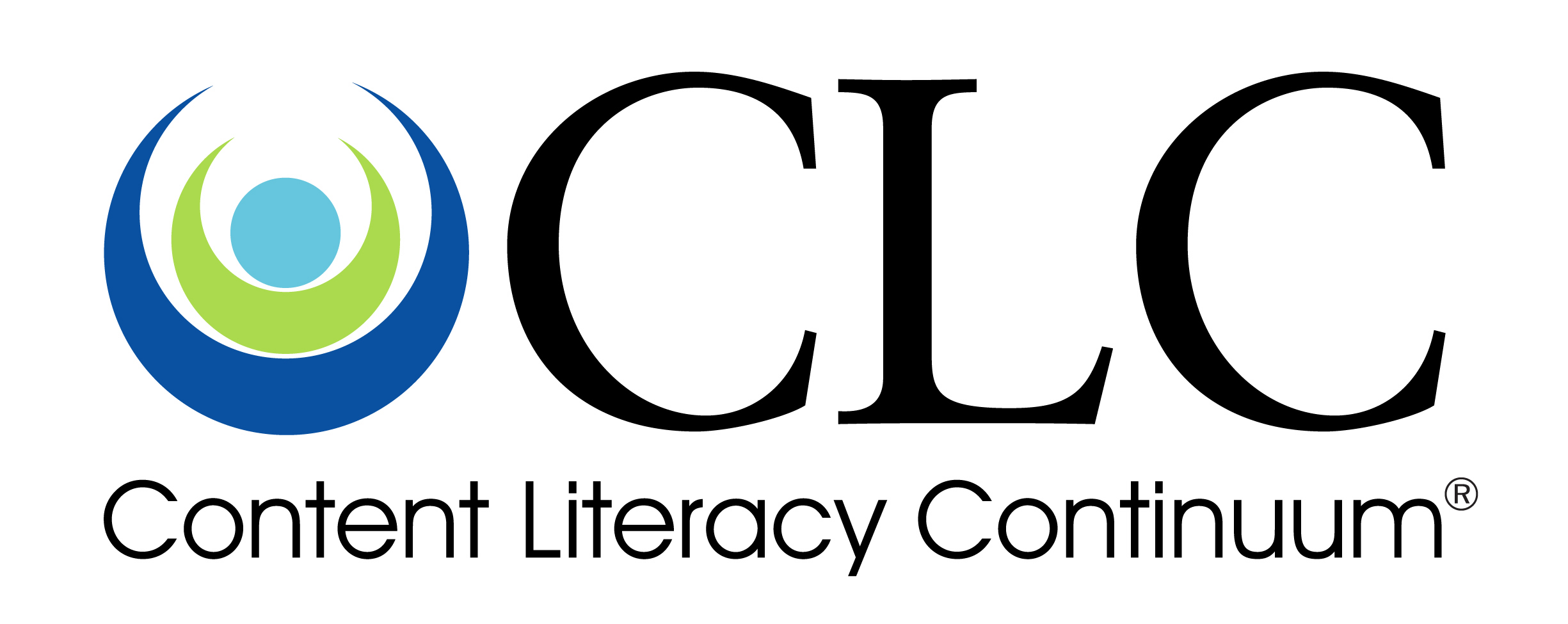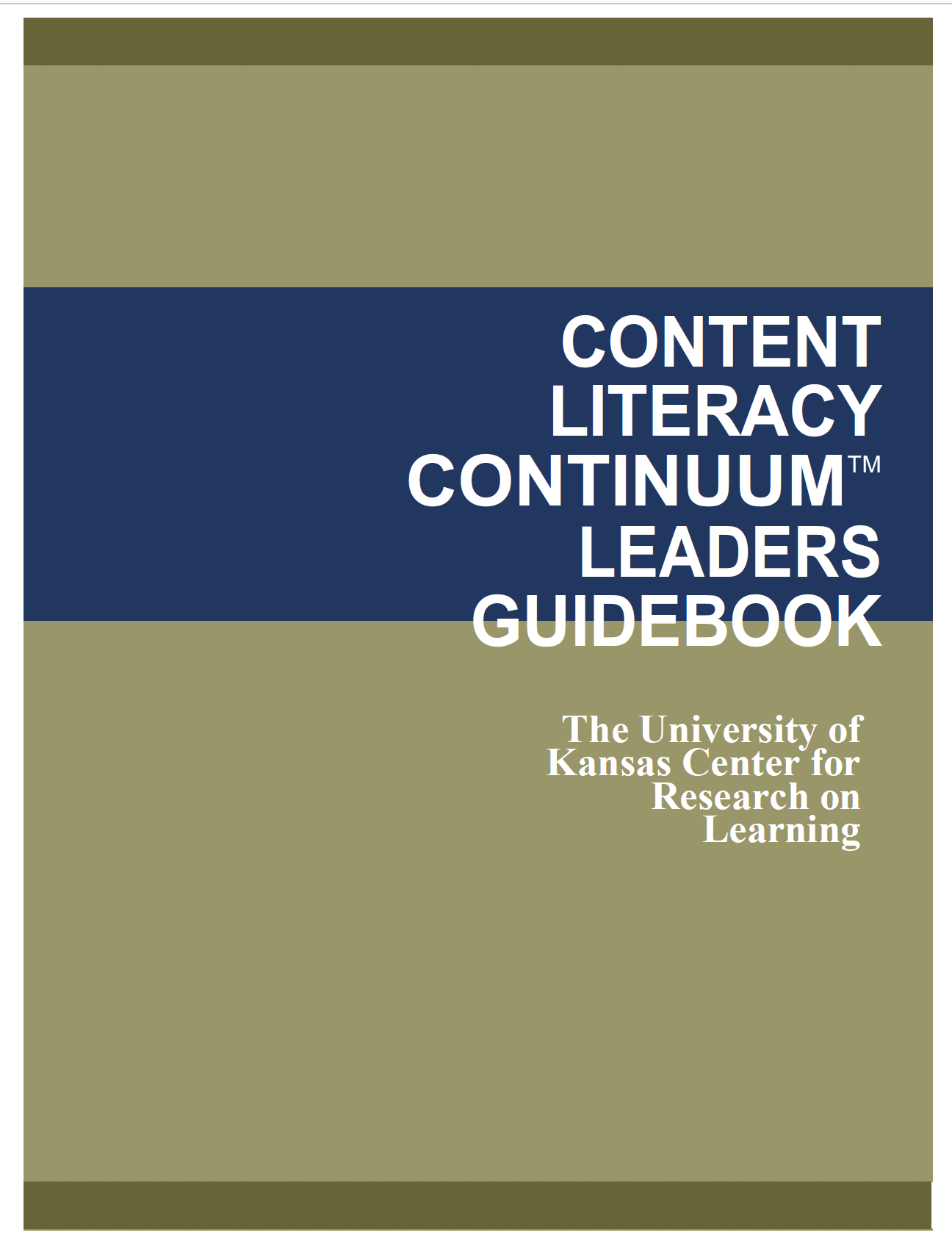
| CLC Resources | ||
|---|---|---|
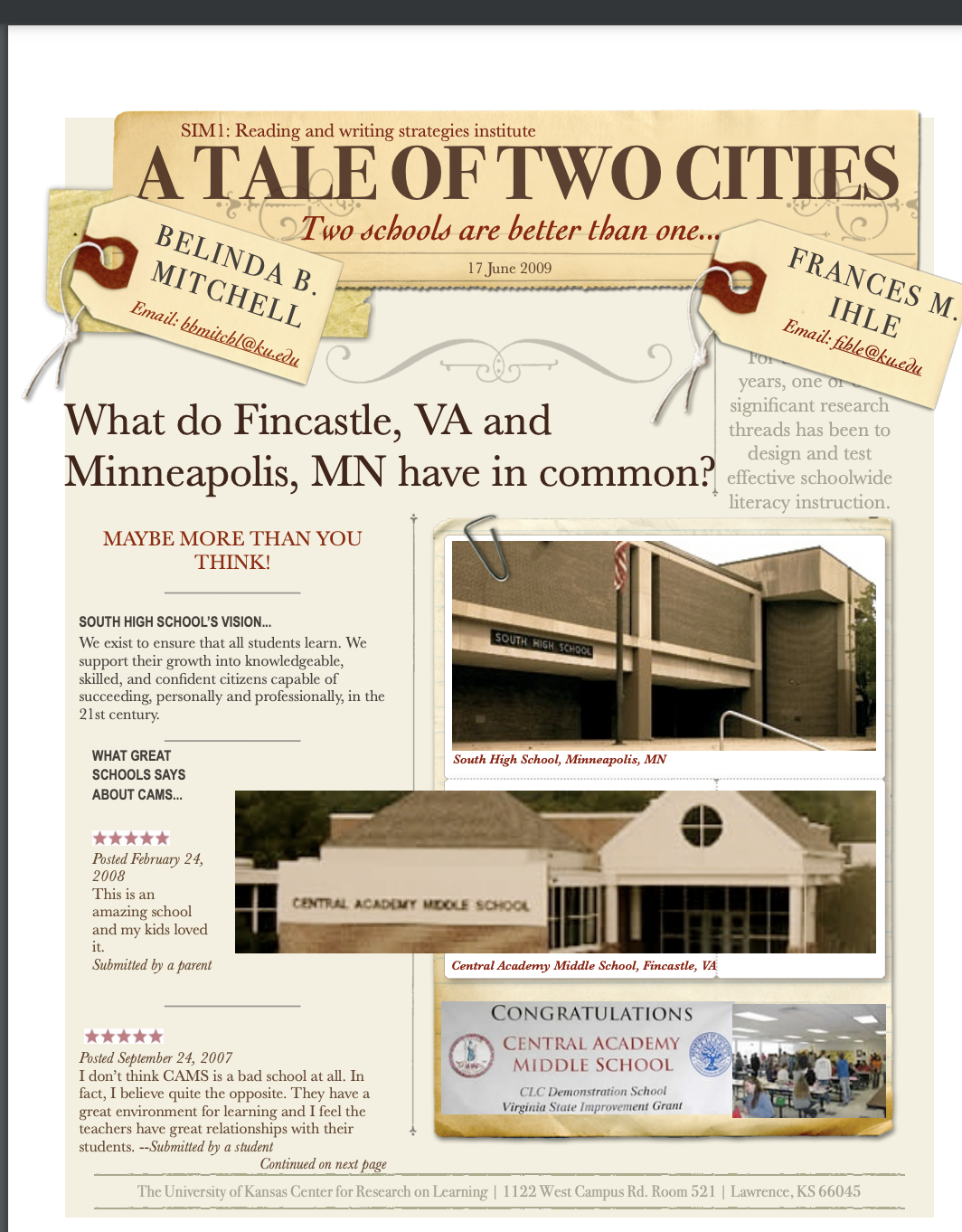
|
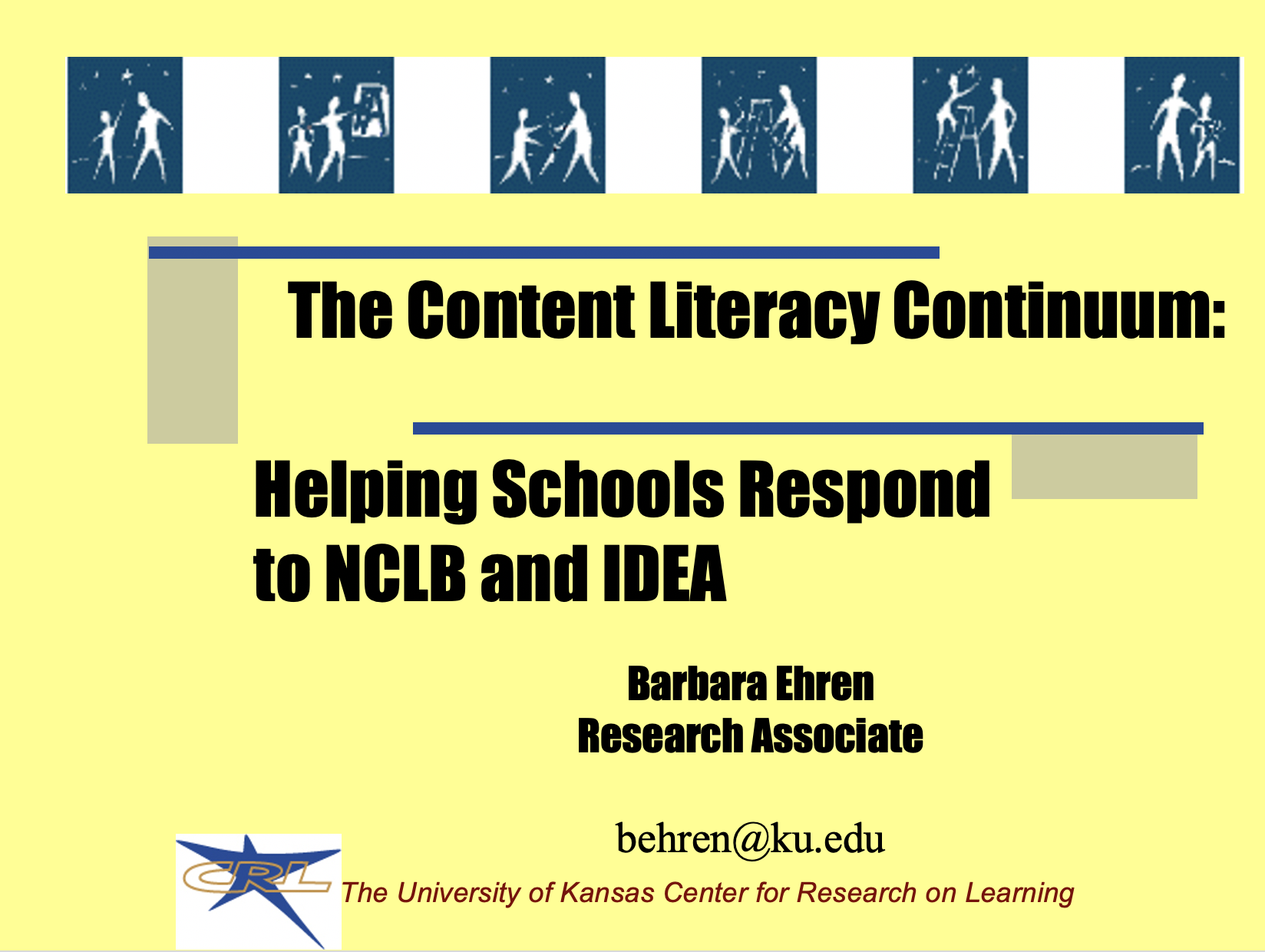
|
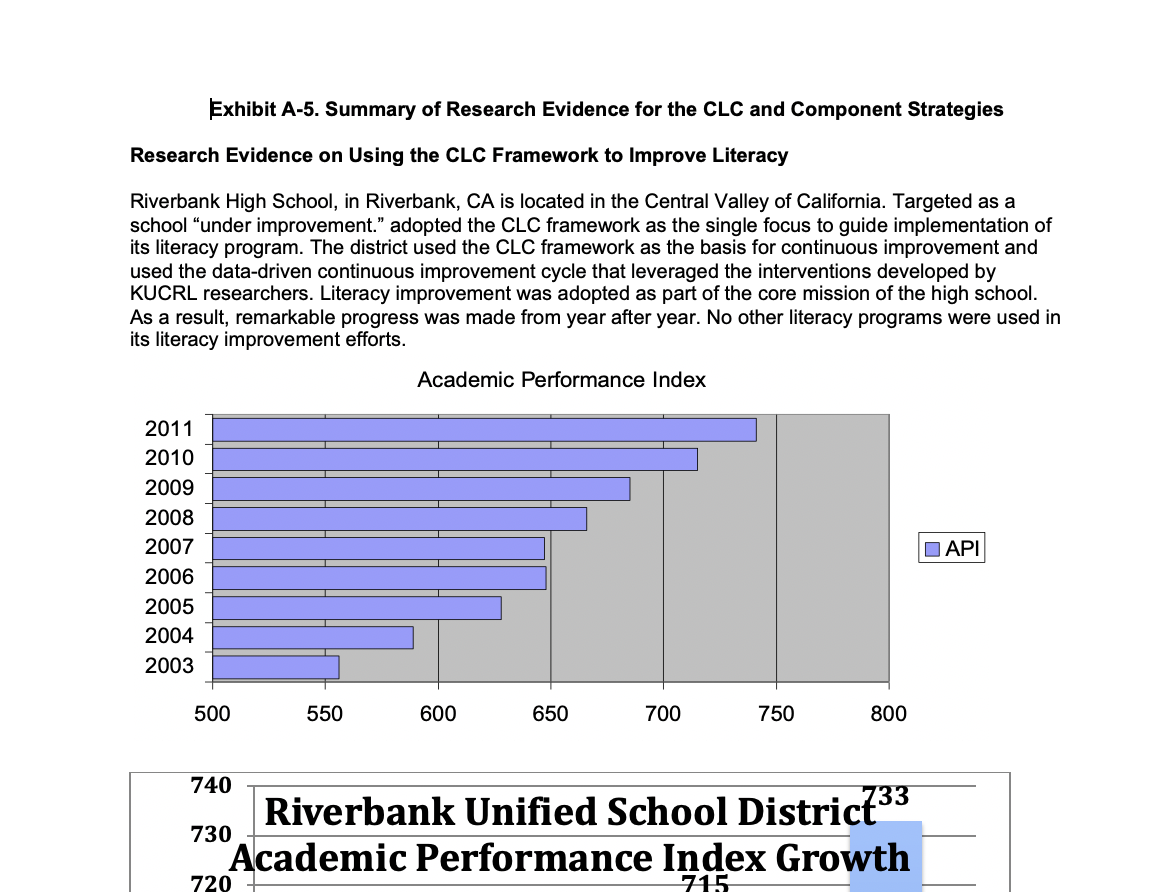 |
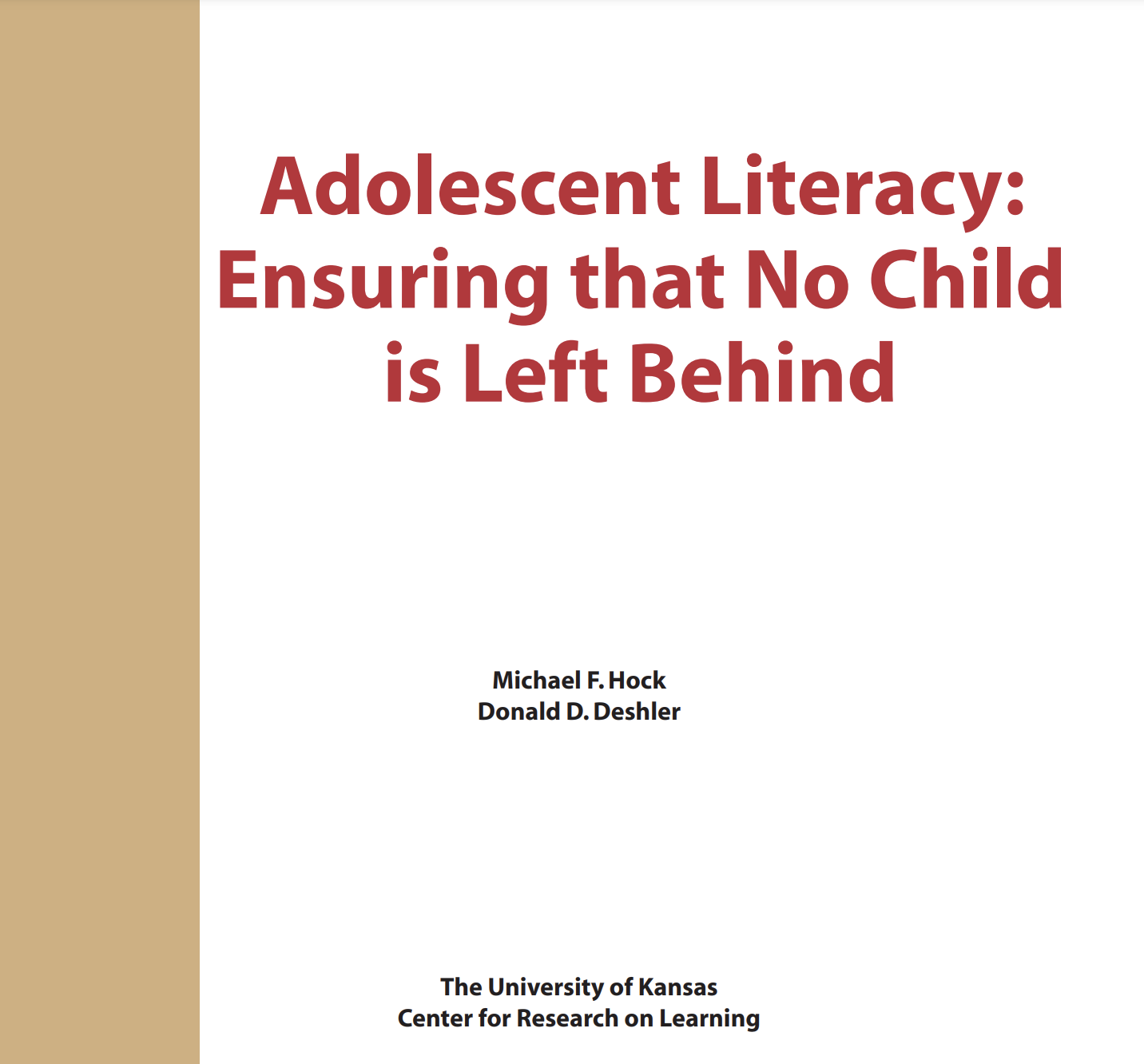
|
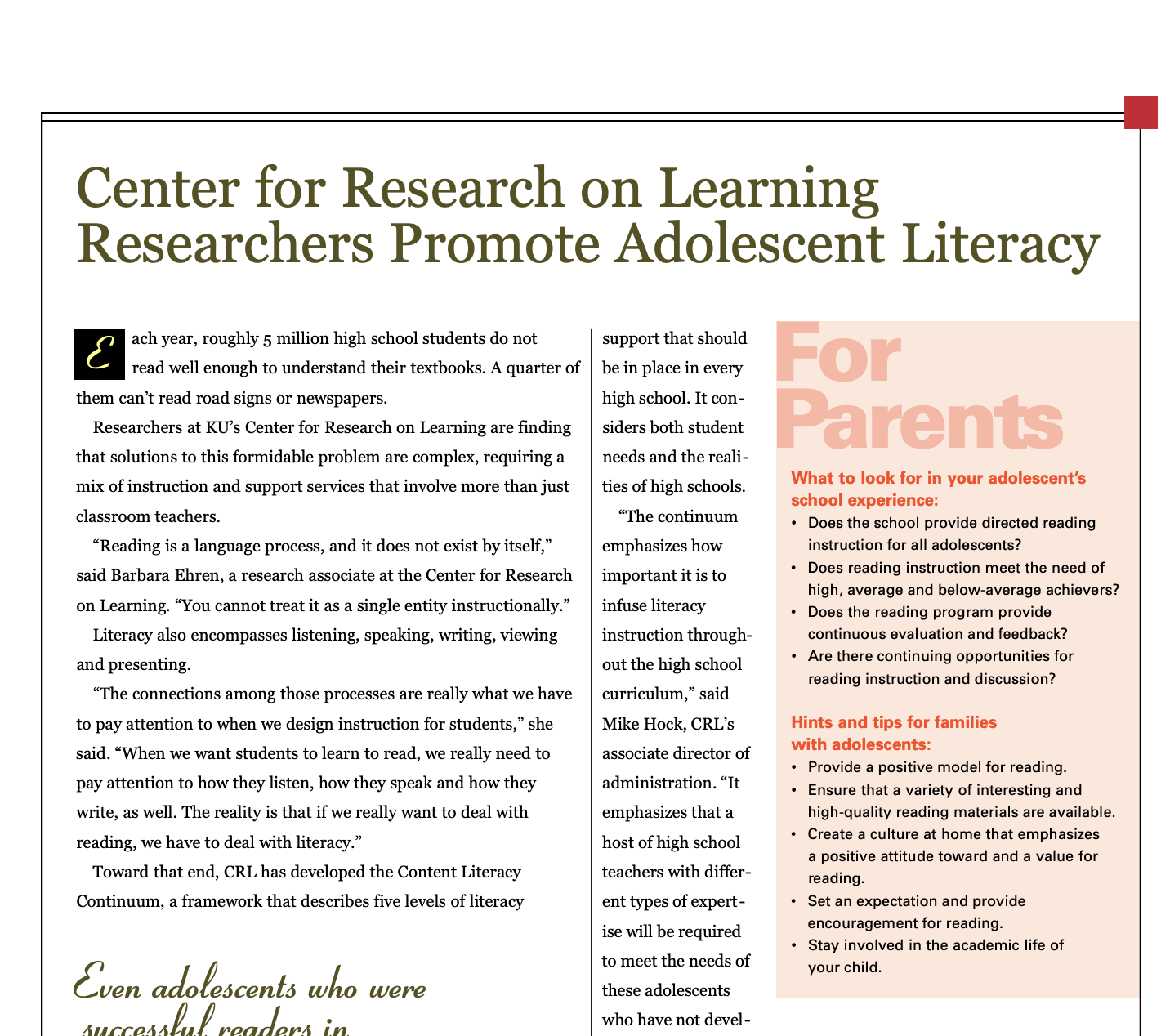 |
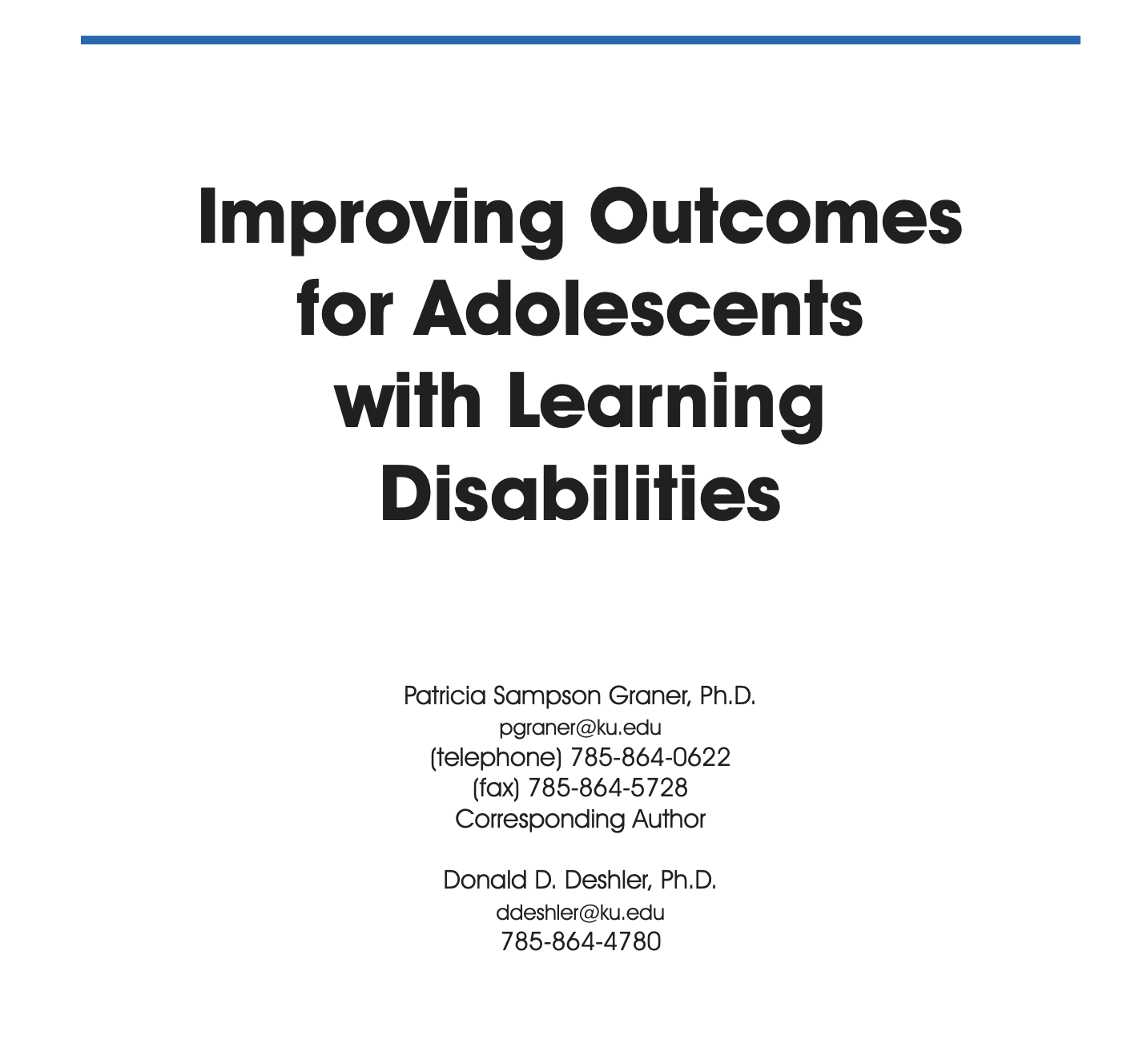 3 categories of support critical in elping to close the gap. 2012 Stratepub
|
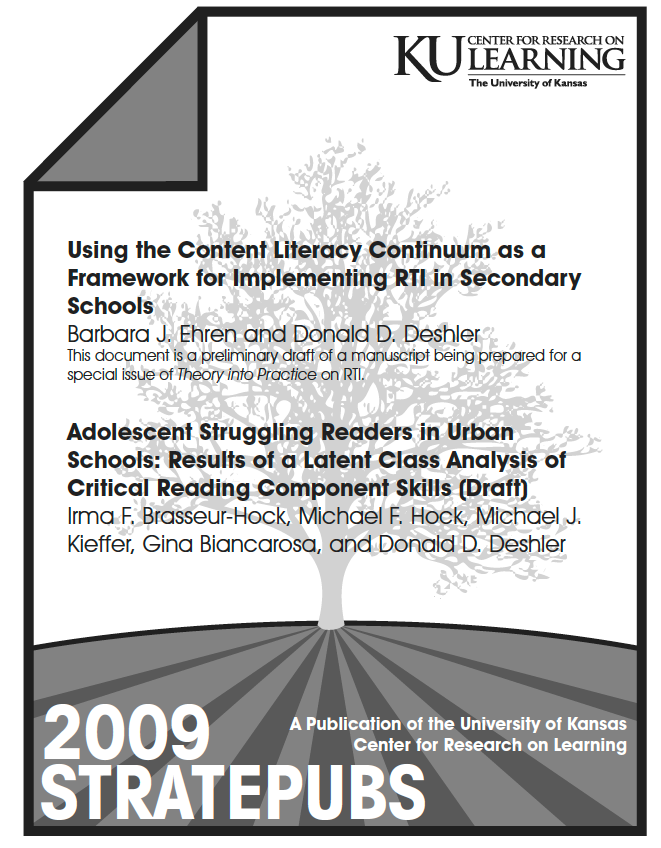
|
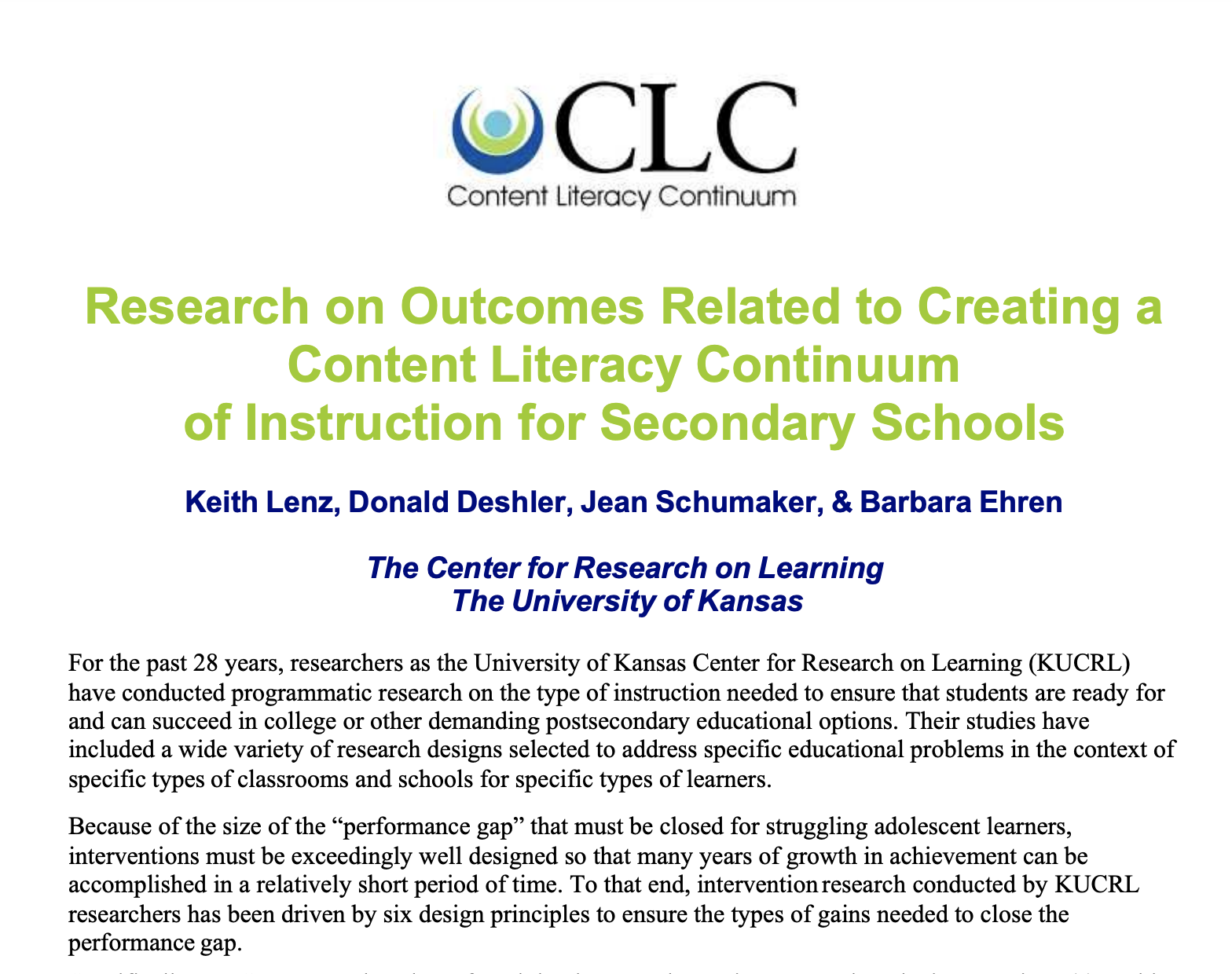
|
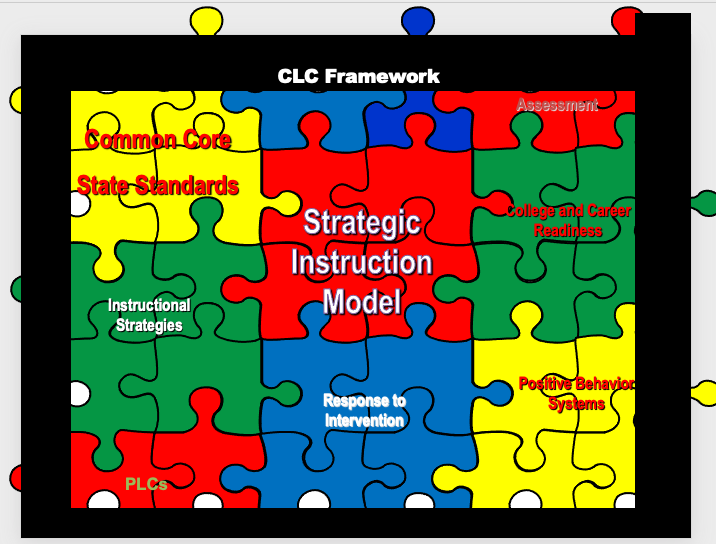
|
- CLC Trademark and Graphics Information
-
The CLC logo consists of the letters "CLC," a graphic, and the words "Content Literacy Continuum." The graphic represents the five levels of the continuum in the form of five nested circles: dark blue, white, green, white, and light blue. The open circles reveal a figure, hands in the air to symbolize success, and their nested nature represents the all-encompassing CLC framework for whole-school improvement.
The fonts in the CLC logo are the same as those in the SIM logo, conveying the message that SIM and CLC are inextricably linked. At the same time, the CLC logo may stand on its own as a strong identifier for whole-school initiatives undertaken by members of the SIM Network.
Please read the CLC Graphics Standards Manual (pdf) to learn how to appropriately use the CLC logo and visual identity (including standards fonts, color recommendations, and other important information) to make your work look professional and consistent with our efforts.Trademark Information (® and ™)
KUCRL has taken steps to legally protect the Content Literacy Continuum. It is important for all of us to use the correct symbol when we use the term or our logo in our materials. "Content Literacy Continuum" and "CLC" are trademarks (™) of the University of Kansas Center for Research on Learning. When you use either term, include the ™ symbol as shown:
Content Literacy Continuum™ CLC™
It is especially important to use this symbol in advertisements and materials promoting workshops and the first time the term is used in articles or other text. It is not necessary to use the symbol every time the words are used in printed materials, but certainly use the symbol on first reference in text and on prominent uses of the term (such as headings). If you question whether use of the symbol is necessary, use it. Note that in addition to using the trademark symbol, the first letter of each word should be capitalized.
The CLC logo is a registered trademark (®) trademark of the University of Kansas Center for Research on Learning. The symbol is incorporated into the design of the logo.
How do I insert ® or ™ into my documents?- On Mac computers, use the key combination Option-R to insert ®.
- On Mac computers, use the key combination Option-2 to insert ™.
- On PCs, use the key combination Alt + 0174 or Ctrl+Alt+R to insert ®.
- On PCs, use the key combination Alt + 0153 (hold down the Alt key while you type the numbers) to insert ™.
- For web use, you can enter the HTML entity ® to insert ® or the HTML entity ™ to insert ™.
CLC Graphics
Two graphic elements comprise the CLC Visual Identity: an official signature (the primary logo for CLC) and an alternate CLC mark. The CLC Graphics Standards Manual clearly explains the different uses of these elements. If in doubt, please use the official signature as the default for all your materials.
CLC graphics may be downloaded in EPS, TIFF, and JPEG file formats.
- EPS is the right choice for use with advanced graphics software (Adobe Illustrator, for example) or desktop publishing programs (such as Adobe InDesign). Vector-based EPS graphics are the best option for high-quality printing and publishing.
- TIFF is the most universal and most widely supported format across all platforms. The TIFF files provided are not compressed and have white backgrounds. They are appropriate for PowerPoint or Microsoft Word use.
- JPEGs are compressed images well suited for use on the web because of their small file size. However, they lack the resolution to be used for high-quality printing.
Official CLC Signature includes 1 color, 2 color and reversed versions in most formats.Download EPS files (.zip format, 1.3MB) Download
CLC Mark includes 1 color, 2 color and reversed versions in most formats.
- EPS files (.zip format, 1.3MB)
- TIFF files (.zip format, 112KB)
- JPG files (.zip format, 260KB)
- PNG files (.zip format, 20KB)
Individual Project Templates
PowerPoint Template (Title Master and Slide Master)
CLC Note Cards
non-event-specific note cards set up to print two on an 8.5"by11" page; trim in half after printing
Documents/PDF
Developing a School-Wide Adolescent Literacy Program: The CLC (presentation handout)
CLC Overview ppt (Graner)
SIM & Muskegon High School (pdf)
This article originally appeared on The Knowledge Loom: What Works in Teaching and Learning, a website developed by the Education Alliance at Brown University. It tells the story of SIM implementation at Muskegon High School, beginning in the mid-1990s, and the improved literacy skills among students that resulted.
CLC Complementary Interventions to Meet the Needs of All Learners (PPT Handout) - Patty Graner, KUCRL & Michael Faggella-Luby, University of Connecticut
Schoolwide implementation of he CLC requires substantial knowledge of the Content Enhancement Routines and the Learning Strategies Curriculum. However, to meet the needs of all learners, complementary scientifically research-based interventions are necessary. This presentation will review a variety of complementary research-based practices at each of the five levels of the CLC for middle and high schools. The presentation will conclude with a framework for assessing implementation efficacy and resources for further information.
Developing a School-Wide Adolescent Literacy Program (PPT Notes pages)
General and Discipline-Specific Strategies and Adolescents Who Struggle: What Can an SLP Do? - Graner (2014 Stratepubs)
Speech-language pathologies who provide services in middle and secondary school settings can play a significant role in shaping how a school addresses the literacy needs of all of its students and especially those who struggle with general literacy. This paper suggests specific ways SLPs can contribute to efforts to improve the literacy outcomes of adolescents. This paper was distributed in 2014 as part of Stratepubs, a benefit of Strateworks membership.
North Carolina CLC Project Lessons Learned
Speech Language Pathologists and the CLC: 2006 SIM Conference presentation notes pdf - Barbara Ehren, KUCRL and Rosemary Tralli, Independent Professional Developer, Glastonbury, CT
Strategram Vol. 21, No. 2 | February 2009: A CLC Tree Grows in Michigan (page 6)
Strategram Vol. 19, No. 3 | March 2007: Lessons in School Change
CLC VIDEO SHORTS:
CLC: Level One: Content Enhancement (00:02:03) - Don Deshler, Keith Lenz, Sue Woodruff
CLC Level Two: Embedded Strategy Instruction (00:01:25) - Don Deshler, Carla Spyksma
CLC Level Three: Explicit Strategy Instruction (00:01:48) - Don Deshler, Keith Lenz, Chris Romero
CLC Level Four: Special Education (01:54) - Don Deshler, Keith Lenz, Chris Romero
CLC Level Five: Therapeutic Intervention (2:03) - Susan Trumbo, Barb Ehren
School Perspective: Principals (00:02:01)
Video Resources
The Content Literacy Continuum - Don Deshler (00:00:56)
A Journey of School Change (01:38:53) - Donald Latham, Holly Drake, Kendall Hunt
In this session, we will share our journey of school change and the implementation of the CLC with SIM. We will focus on specific changes in our school's teaching and learning culture and the challenges we have faced. Participants will hear the perspectives of both administration and teacher leaders as we tell our story of school change through the use of school and student date, success stories and video clips in relation to the five levels of CLC
Buy-in and Understanding CLC at School Level - Suzanne Robinson, Barb Ehren (01:01:08)
Professional developers working with schools to adopt the Content Literacy Continuum know that buy-in and understanding of the CLC on the part of teachers and administrators are crucial components of the process. However, an important lesson learned over the years has been that buy-in and understanding are not accomplished by initial eff orts alone; that is, buy-in takes more than up-front willingness to engage in CLC adoption, and full understanding requires more than a CLC overview. In this session, participants will discuss the kinds of activities that facilitate CLC buy-in and understanding and the timing for these activities over the course of a CLC adoption initiative. Participants will gain knowledge about critical components to consider when developing a CLC adop-tion strategy.
CLC as RTI Video Part 1, Video Part 2- Deshler, Ehren, Lenz
Responsiveness to Intervention (RTI) programs are receiv-ing considerable attention nationally. However, in most instances, the focus is on early grades. If we think about the Content Literacy Continuum (CLC), it becomes clear that it contains the seeds of a secondary RTI approach. In this session, the parallels will be drawn between the CLC and RTI, with direct links between the CLC levels and typical RTI tiers. Further, discussion will focus on the basic tenets of RTI as a blueprint for implementing the continuum.
Level 3 of the CLC: Fusion Reading as a Supplemental Reading Class (01:15:30) - Mike Hock and Irma Brasseur-Hock, KUCRL
The overriding objective for this session is to present the Fusion Reading curriculum. We will briefly discuss characteristics of struggling adolescent readers and the multiple clusters of reading profiles they present; share an overview of the Fusion Reading curriculum and instructional methodology and how it responds to the needs of struggling readings; and present the results of studies conducted to test the program's effectiveness. Fusion Reading is a comprehensive program that includes strategies for increasing reading motivation, decoding, word identification and fluency. Additionally, the program includes reading comprehension strategies for paraphrasing, summarizing, generating questions, drawing inferences, and recognizing text structures as well as a vocabulary component that focuses n learning vocabulary in context and through class discussion. The instructional methodology is based ion explicit instruction with extensive practice and feedback on student learning of reading skills and strategies.
Level 2 of the CLC: Fusion Reading in the Gen Ed Classroom for Vocabulary & Reading: 2010 SIM Conference (01:22:24) - Mike Hock and Irma Brasseur-Hock, KUCRL
During this session, we will share our initial thinking about how to move selected components of Fusion Reading into the general education classroom. We will focus on tow interventions: the Fusion Reading Vocabulary process and using Thinking Reading as a framework for content teachers to describe, demonstrate, and guide students in the use of general reading strategies that are content-area specific. If you are interested in a creative experience with the opportunity to engage in the further development of Level 1 strategies, this session is for you. If you are in need of a published manual on Level 1 strategies, this session may not meet your needs.
CLC: A Primer (00:55:32)- Keith Lenz
All SIM Professional Developers must have a basic under-standing of the Content Literacy Continuum. This session will focus on understanding the goals of the CLC, how to make a brief presentation, and how to access and use basic documents needed to promote an understanding of the CLC.
CLC: District Perspective (00:03:41) - Arlyn Zack, Former Principal, Muskegon, MI
- CLC: What do I Need to Know? A Three Part Video Series (2006)
-
CLC: What Do I Need to Know? (Three Part Series) (02:27:19)
CLC Learning Group 1: What’s it All About? - Patty Graner and Keith Lenz, KU-CRL
Participate in this beginner’s CLC session if this statement best refl ects your knowledge and involvement with CLC: “I have heard about CLC and I have even been to an overview, but I am not comfortable articulating specifi c information about what CLC is.” Th is learning group will focus on understanding the goals of the CLC, how to make a brief CLC presentation, how to access and use basic documents needed to promote an understanding of the CLC, and the relationship between KU-CRL and the Strategic Learning Center.
CLC Learning Group 2: Getting Started - Beverly Colombo and Carolyn Slater
Participate in this intermediate CLC session if the following statement best refl ects your knowledge and involvement with CLC: “I believe I understand the CLC levels of instruction, and I need to learn how I can work with a school to begin the CLC adoption process.” Th is learning group will focus on understanding the Exploring and Planning phases of CLC adoption, how to make a full CLC presentation, how to access and use the resources and tools related to CLC, how to launch a CLC adoption process, and the process of becoming a CLC team member and lead.
CLC Learning Group 3: Making it Work - Barbara Ehren, KU-CRL, and Rosemary Tralli, Independent Professional Developer, Glastonbury, Conn.
Participate in this advanced CLC session if the following statement best refl ects your knowledge and involvement with CLC: “I am involved in CLC adoption work and want to learn how I can address the opportunities and challenges of school-wide adoption of CLC.” Th is learning group will focus on collaboratively exploring and surfacing the perils of systems change, the principles of embedded professional development, and how to access and use systems change resources and tools PPT slides
Creating Strategic Schools: Case Studies of 2 Small Schools (00:55:48) - Deshler, Schumaker
Over the past five years, the presenters have worked with the staffs of two small private schools to create strategic schools. This presentation will cover the process by which SIM was integrated into the schools, some of the problems that were encountered, the solutions that were tried, and the results that were achieved.
CRL’s Role in Promoting Adolescent Literacy (00:59:55) - Lenz, Ehren, Deshler
How SIM Fits w Standards Based School Improvement: 2000 SIM Conference (01:02:20) - Lenz, Sanders
Implementing a School-Wide Literacy Plan at Delta Sierra Middle School (01:02:23) - Geisick, Graving
Winners of the 2003 SIM Innovation and the SIM Leadership Awards, Ken Geisick and Peggy Graving will share the magic of how staff at Delta Sierra Middle School in Stockton, Calif., implemented a school-wide literacy plan based on SIM. Th is urban, under-performing school more than doubled its required state growth target and made statistically signifi cant gains for both English Language Learners (ELL) and English Only Learners by creating a school-wide reading program designed around a package of SIM strategies and routines. In addition, Ken Geisick, now principal of Riverbank High School, and Ron Costa, Director of Educational Services, will share their insights on leading a district-wide SIM/CLC project.
Institute for Education Sciences (IES) Report on the Content Literacy Continuum: 2013 SIM Conference (00:26:04)- Don Deshler, Patty Graner, Mike Hock
An evaluation of a two year implementation of the Content Literacy Continuum (CLC) was conducted through the Institute for Education Sciences in 2012. The report offers an opportunity for us to learn, grow, and remind ourselves about the complexity of change in schools. In this session, we will highlight the findings in the report, discuss lessons learned and application of those lessons in future studies, and develop responses to common questions about the results. IES Report on the CLC (ppt)
Leading CLC Initiatives: If I only Knew What I know Now: 2006 Conference Panel (01:38:03) - 2006 Joan Fletcher, Independent Consultant, Oakton, VA ; Peggy Graving, Secondary Curriculum Coach, Stockton CA ; Cathy Spriggs, Consultant, Modesto, CA ; Rosemary Tralli, Independent Professional Developer, Glastonbury, CT ; Sue Woodruff, Independent Consultant, Muskegon, MI ; Moderator: Barb Ehren, KUCRL
This panel, comprising individuals who have led CLC initiatives in schools, will share insights about what they now know about leading these kinds of projects that would have helped to know going into a project. This presentation will be informative for any professional developer working to help schools implement their school improvement plans, but will be especially helpful to those working on or planning to work in CLC initiatives. The focus will be on starting schoolwide projects.
Literacy Leadership Team: Finding Direction: 2012 SIM Conference (01:18:28) - Sue Woodruff, Independent Professional Developer, Muskegon, MI
School leaders are looking for help in redesigning their approach to literacy in secondary schools. When they look to us, SIM Professional Developers, it is critical that we prepare a school for success. Prior to any journey, much work is done in planning, preparing, educating, and training everyone involved. New routes must be explored. Detours and directions must be examined. The Common Core Standards are causing most schools to reexamine previous routes to literacy as the way is becoming more and more challenging for all students. What SIM Professional Developers and CLC Team Members have learned over the past twelve years is that this very preparation is critical not only to the ongoing school-wide effort, but more importantly to the continuity of literacy work in a school. This session will provide a forum to have dialogue about the roles and responsibilities of a SIM Professional Developer when working with a school, the roles and responsibilities of the team itself, and have some time to take a look at a variety of activities actually used with Literacy Leadership Teams that are now available to the network.
Moving Schools Forward with CLC and Instructional Coaching: 2006 SIM Conference (00:50:33) - Keith Lenz, Barb Ehren, Jim Knight, KUCRL, Sue Woodruff, Independent Consultant, Muskegon, MI
This session will examine three approaches designed to support and encourage large scale SIM implementation. Presenters will describe the benefits of Instructional Coaching, Collaborative Coaching, and thee Content Literacy Continuum and highlight the ways in which edeas from each can be used in conjunction with and to complement each other.
RTI and the Strategic Writing Program: Latest Understandings and Results: 2013 SIM Conference (01:22:23)-Bev Colombo, Suzanne Robinson, Jean Schumaker
This session will describe a model demonstration project to develop a whole-school instructional program for writing at the high school level. The curriculum plan for Sentence, Paragraph, and Theme Writing Strategy instruction will be shared along with efforts to implement Tiers 2 and 3 within an RtI model. Exciting results of criterion-based and standardized writing tests (the TOWL-4 and state writing competency test) will be presented for two high schools.
- SIM Conference 2009 STRAND: SIM as a Change Agent (01:38:53) - Suzanne Robinson, Bev Colombo, Barb Duchardt, Joyce Russo, Kristina Braud, Patty Kohler-Evans
-
VIDEO
This strand focuses on how SIM/CLC can and often does act as a catalyst for change in schools. Topics may include: 1. What we have learned about change from SIM/CLC initiatives and how our observations reflect the research 2. Identify elements for success in adolescent literacy initiatives 3. Growing SIM into a schoolwide RTI/Literacy effort, integrating with other initiatives 4. Data, data, data--collection, organization and review 5. Sustaining change even when...staff turnover, administrative changes, structural changes- CLC: A School Reform Framework for Improving Adolescent Literacy for All Students (Lenz, Ehren, Deshler)
- When Accountability Knocks, Will Anyone Answer?-Elmore and Abelman
- Learning to Lead Change, Building System Capacity-Fullan
- SIM Conference 2010 Strand: SIM as a Change Agent - Pam Leitzell, Independent Consultant, Maryville, TN Dotti Turner, Independent SIM Professional Developer, Setauket, NY Ken Geisick, Riverbank, CA Unified School District Leslie Novosel, Jake Cornett, and Don Deshler, KUCRL
-
VIDEO Part One | VIDEO Part Two
There is a new sense of urgency across the nation for educators to find ways to create changes in schools that will result in high performance by all students. Yet with all the focus on change, progress sometimes seems miniscule. Why do some schools generate drastic improvements while others do not? Join this session to discuss the various ways that SIM can make dramatic impact in schools by offering a tiered instructional approach through the Content Literacy Continuum. This approach addresses many of the needs schools face today, including issues surrounding RTI. This session will focus on 5 critical components needed to create significant change in your school.- CLC Brochure: Leveraging Research to Promote Schoolwide Literacy in Secondary Schools (pdf)
- Data_Terms._Novosel.Cornett(doc),
- Using Data to Inform a School-wide Literacy Reform Initiative.Novosel.Cornett.key(pdf),
- Deshler_(SIM_as_a_Change_Agent)(ppt),
- Focus Questions for_Break Out Sessions(doc),
- Teachers Make a difference, What is the Research Evidence? John Hattie (pdf),
- Tiered Interventions in High Schools Using Preliminary Lessons Learned to Guide Discussionpdf),
- Nominal Group Technique for Decision Making.ReferenceList(doc),
- Nominal Group Technique .Novosel.Cornett(doc),
- SIM_as_a_Change_Agent_Agenda(doc),
- SIM Conference Strand 2010: SIM and Literacy - Michael Faggella-Luby, University of Connecticut Tim Shanahan, University of Illinois at Chicago Rosemary Tralli< Independent Consultant, Glastonbury, CN Frances Ihle and Don Deshler, KUCRL
-
VIDEO Part One | VIDEO Part Two
This strand further explores Tim Shanhan's keynoote address, making new connectons between literacy instruction and CLC schools.
Resources:
SIM__Literacy_STRANDHO.pdf - SIM Preconference 2008: Applying an RTI Framework to Adolescent Age Students (03:50:00) - Don Deshler and Daryl Mellard, KUCRL, Evelyn Johnson Boise State University, and Barbara Ehren, University of Central Florida
-
VIDEO Part One (01:19:49) | VIDEO Part Two: (2:28:23)
Response to intervention research has focused on elementary school applications. In this session, we will review RTI models, important decisions for their application in a middle school, and the directions for developing, implementing and scaling up.
Resources:
RTI_Preconference_workshop.ppt
Applying an RTI Framework to Adolescent-Age Students ppt notes handout
RTI_JohnsonhandoutJH_Screen.doc
johnsonRTI-_Student_Data_Template.doc
Evelyn Johnson Progress Monitoring ppt Handout
Don Deshler Leadersip Considerations pptHandout
RTI Implementation Tool: Best Practices for Grades K-5
Evelyn Johnson Screening ppt notes
Tiered Levels of Instruction/Intervention Barb Ehren ppt notes
Three Tiered Model illustration and Roles/Activities
Challenges to Sustainability and Solutions note page
Take Two with CLC Vocabulary Options - Kendall Hunt (00:26:44) VIDEO
The Virginia Project: A Six-Year Journey to Implement the CLC (01:30:50) VIDEO- Gillam & Hunt, KUCRL ; Crook, Shenk, Guillena & Warnick, Patrick Henry High School, Ashland VA; Latham & Dauksys, Liberty Middle School, Ashland VA; Talbott & McCaleb, James River High School, Buchanan, VA; McClung, Central Academy Middle School, Fincastle, VA; Poff & Busher, Botetourt County, VA Public Schools
Explore lessons learned and future considerations from the six year journey toward implementing the CLC with the four schools receiving the 2011 SIM Impact Award. The results that will be shared are due to the heroic, collective effort of each Literacy Leadership Team in partnership with its school community to focus on one priority--improving literacy outcomes for every student. All 5 levels of the CLC are fully in play at each school and the results are impressive. Handout: Liberty and Patrick Henry Progress Summary
Viewing SIM from an Administrator’s Perspective - Short, Graving, Geisek (00:58:32) VIDEO
This session will look at SIM and CLC initiatives through an administrative lens. The presenters draw on a wealth of personal teaching, professional development, and administrative experience as they discuss the complex set of challenges involved in successfully implementing SIM and CLC. The differences in perspectives of teachers, professional developers, and administrators can move SIM forward or stop it in its tracks. Likewise, the multiyear process of CLC school reform presents unique challenges for leaders and requires acquisition of new leadership skills. Th is presentation will examine these issues and provide insight and strategies for leading a staff in SIM and CLC efforts.

